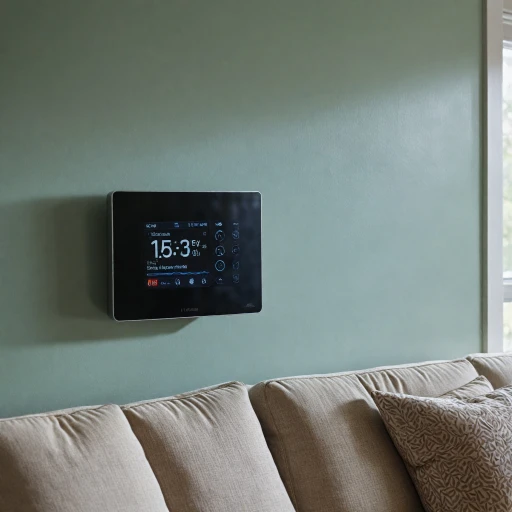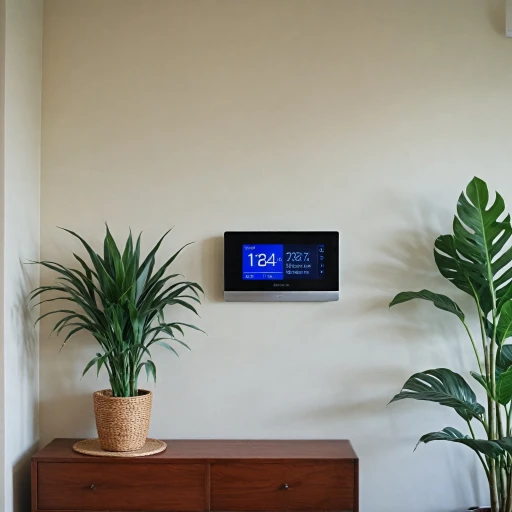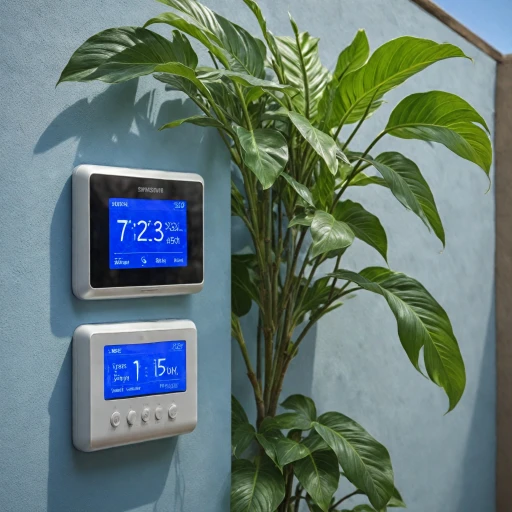Understanding Wireless Indoor Outdoor Thermometers
Decoding the Functions of Wireless Indoor Outdoor Thermometers
In today’s smart home era, wireless indoor outdoor thermometers have emerged as staple devices for those who focus on maintaining optimal room comfort and energy efficiency. These digital thermometers offer precise temperature and humidity readings, providing an overview of both indoor and outdoor environments. Essentially, these devices are a practical blend of a digital thermometer and a weather station.
At the core of these thermometers is a sensor that accurately records and displays temperature variations. With wireless functionality, these stations are easy to set up and use, offering a seamless experience for users of all tech levels. This capability eliminates the need for cumbersome wires, making them a neat addition to any smart home setup.
Products such as the Acurite wireless thermometer often garner high customer reviews, reflecting their quality and performance. Users appreciate features like humidity monitors, clear digital displays, and the ability to track weather changes effectively. They perform as a thermometer hygrometer, measuring both temperature and humidity, helping maintain indoor comfort.
Wireless thermometer systems are praised for their energy-saving potential, which indirectly ties to cost savings on energy bills. By understanding local outdoor temperatures, these thermometers can aid in efficient heating or cooling management through smart thermostats. For a deeper dive into enhancing smart thermostats with outdoor temperature sensors, you can explore more insights here. The integration with smart thermostats only amplifies their practicality, playing a significant role in advancing smart energy management.
As digital weather stations continue to evolve, customer reviews consistently highlight their remarkable effectiveness and ease of use, contributing to their growing popularity in home temperature management. With a range of options available at various price points, they remain accessible to a broad audience, making them a worthy investment for contemporary households.
Integration with Smart Thermostats
Seamless Integration with Modern Thermostats
The fusion of wireless indoor outdoor thermometers with smart thermostats has become a game-changer for those seeking ultimate convenience in home temperature regulation. These smart devices offer a suite of advantages that enhance the functionality of your existing thermostat system. Smart thermostats are designed to communicate seamlessly with wireless thermometers. This coordination empowers users to have more precise control over their home's climate. For those who aim to optimize energy efficiency and minimize costs, this integration proves advantageous. Wireless thermometers furnish real-time temperature data from both indoor and outdoor environments, feeding it directly into the thermostat. Having access to this data allows the thermostat to automatically adjust heating or cooling systems, ensuring your space remains at comfortable levels. The ability to analyze and react to changes in outdoor temperature and indoor humidity provides homeowners with a tailored heating and cooling strategy. For instance, investing in a wireless digital thermometer can enhance the responsiveness of your heating system during unexpected weather changes, such as a sudden outdoor temperature drop. This feature is particularly beneficial in maintaining comfort and potentially reducing energy consumption. When choosing a product, checking customer reviews helps identify reliable brands, with Acurite being a popular choice that consistently earns high stars. Many smart thermostats support integration with digital weather stations, offering a more holistic view of your home’s climate dynamics. Such systems might also include features like a humidity monitor or a digital display, improving ease of use. Before investing, consider the potential service and price of the product. Finding the right combination of features and customer satisfaction will ensure a seamless integration experience. For more detailed insights into maximizing your smart thermostat’s capabilities with an outdoor temperature sensor, visit this detailed guide.Energy Efficiency and Cost Savings
Maximizing Energy Efficiency and Cost Reduction
The integration of wireless indoor outdoor thermometers with your smart thermostat plays a pivotal role in achieving energy efficiency and reducing costs. By measuring both indoor and outdoor temperature, these devices ensure that your heating and cooling systems operate only when necessary, minimizing energy wastage. One of the key benefits of using a digital weather station with your thermostat is the precise control it provides over your home’s climate. Being equipped with a thermometer hygrometer, it accurately tracks the humidity levels in addition to temperature. This means your HVAC system can be adjusted based not only on the thermostat temperature but also considering the overall comfort determined by humidity levels. When it comes to reviews, products like Acurite's digital thermometer stand out for their effectiveness in achieving significant energy savings. For instance, wireless thermometer systems with good customer reviews often highlight easy setup and comprehensive outdoor and indoor temperature readings. As a result, users report noticeable reductions in their monthly energy bills. Digital weather stations that feature wireless digital sensors can also enhance your smart thermostat’s ability to preemptively adjust settings according to upcoming weather conditions. These systems, star-rated for their reliability and accuracy, are cost-effective solutions that help maintain a comfortable room climate without excessive energy consumption. While the initial price of a high-quality wireless thermometer may seem steep, the long-term benefits in terms of energy efficiency and cost savings often justify the investment. Smart technology is a big step towards sustainable living, providing easy-to-understand insights right on the display of your smart thermostat. This ensures you always have control over your environment and budget.Installation and Setup
Making Sense of Setting Up Your Smart Thermostat System
Setting up your wireless indoor outdoor thermometer to work in harmony with your smart thermostat can feel daunting, but it doesn’t have to be. Here’s how you can install and configure these devices to optimize your home's climate control. Start by ensuring your outdoor thermometer is positioned correctly. It should be placed in a shaded area to prevent direct sunlight from affecting the temperature readings. An ideal location would be on the north side of your home, where the sensor can capture accurate outdoor weather conditions without interference. Indoors, the placement of the digital thermometer is just as crucial. Avoid direct drafts from air vents or sunny spots, as these can distort the sensor's temperature and humidity readings. Aim for a central room location to get a precise overall view of the indoor climate. Now, let’s connect your wireless devices. Many smart thermostats and digital weather stations come with a user-friendly app that guides you through the setup process using your smartphone or tablet. Using the app, find and synchronize your wireless thermometer to the digital display of your thermostat. This process typically involves connecting to your home’s Wi-Fi network to establish a seamless wireless communication setup. Most modern thermometers and weather stations come with a detailed manual, making it easy to follow installation instructions. Brands like Acurite often receive positive customer reviews for their straightforward setup process, often praised in reviews with high stars. When installing your product, you’ll also want to calibrate the sensors. This might mean adjusting the settings to match several sources, ensuring your thermometers give accurate room and outdoor temperature and humidity readings. In case you encounter issues during setup, there are plenty of resources available. Online forums, product reviews, and the manufacturer’s support can provide helpful troubleshooting tips. These resources act as a valuable aid if your wireless thermometer or humidity monitor isn't functioning correctly. Finally, consider the ease of use and display readability when choosing your thermometer. Wireless digital options with clear readout displays ensure a user-friendly experience, highlighting why paying attention to stars reviews can be important when selecting a product.Troubleshooting Common Issues
Addressing Common Technical Glitches
While using a wireless indoor outdoor thermometer with your smart thermostat can bring numerous benefits, occasional technical issues may arise. Here are some common problems and potential solutions to ensure that your system functions smoothly:
- Signal Interference: Since wireless devices rely on radio frequencies, interference from other electronic appliances might affect the performance of your thermometer. Ensure your thermometer is placed away from electronics like microwaves and cordless phones to minimize any disruptions.
- Outdated Software: Ensure that your smart thermostat and any connected devices like weather stations have the latest firmware updates. This not only improves device compatibility but often resolves known bugs and enhances performance.
- Battery Issues: If your wireless thermometer or associated sensors start showing inaccurate readings, consider replacing the batteries. Most digital thermometers and humidity monitors provide a battery life indicator, so regular checks will help maintain reliability.
- Temperature Calibration: Sometimes, the temperature or humidity readings can drift from accurate values. Most devices allow manual calibration through their settings menu. This will help realign readings with actual room or outdoor conditions.
- Connection Drops: For wireless thermometers, consistent connectivity is crucial. If your temperature sensors frequently lose connection, check the range specified in the product's reviews and ensure the device is within it. Moving other wireless devices further away from your sensor can also reduce connection drops.
Customer reviews often highlight the strengths and weaknesses of specific models, such as the well-regarded AcuRite, which is known for its reliable performance. Considering these insights alongside the product’s star rating can guide better purchasing decisions. With a price check and hands-on reviews, you can select a digital weather station that best fits your needs, ensuring smoother integration and functionality for your smart home environment.
Future Trends in Smart Home Technology
Innovations and Emerging Trends in Smart Home Technologies
The landscape of smart home technologies is evolving rapidly, with a particular focus on enhancing convenience and connectivity. As smart thermostats integrate more seamlessly with wireless indoor-outdoor thermometers, the synergy between devices continues to offer exciting possibilities. Here are some trends that are shaping the future:- Advanced Sensor Technologies: Improvements in temperature and humidity sensors are delivering more accurate and real-time data. This not only enhances the precision of smart thermostats but also optimizes energy use by responding dynamically to changes in indoor and outdoor temperature conditions.
- Artificial Intelligence and Machine Learning: By leveraging AI and machine learning, smart thermostats are becoming increasingly proficient at predicting household patterns and adjusting settings autonomously. This leads to both increased comfort and savings.
- Integration with Other Smart Devices: The integration of digital weather stations and smart home ecosystems is now more robust than ever. Through wireless digital protocols, your thermostat can communicate with various devices, providing a cohesive smart home experience.
- Eco-Friendly Initiatives: Increasingly, products such as wireless thermometers and smart thermostats are being designed with sustainability in mind. By reducing energy waste, these devices help decrease the environmental footprint of households globally.
- User Interface Innovations: Digital display advancements ensure that consumers can easily interpret data and manage settings. This change meets the demand for easy-to-use interfaces that cater to a wider audience, including less tech-savvy users.





